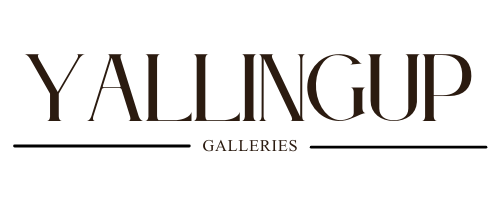Leon Pericles
Marks of Perpetual Significance
Couldn't load pickup availability
Share
Image: 97cmH x 31cmW
Framed: 116cmH x 47cmW,
Etching with Collage
Variations to this image and framing occur with different editions.
Please contact the gallery for specific images of the edition in stock if required.
Marks of Perpetual Significance
An Etching by Leon Pericles
This etching has been something I’ve wanted to do as there’s fascinating variations in the marks mankind has used over time to communicate. It’s quite inspiring to see our evolution in agriculture education and intelligence directly associated with methods of mark making. Writing and mark making is one of mankind’s greatest inventions.
In this art piece, you can see the evolution of mark making through history, where I reference significant discoveries from the “Furtile Crescent” (U) right through to our contemporary writing tools of pens and graphic design (S,T).
It shows us how clever we are and have evolved. It’s enabled us to write the most beautiful things, including information that leads to extraordinary knowledge and invention. The pivotal step of recording marks in society has allowed the world to evolve their education.
The Beginning:
While I was researching the history of the archeology around writing, it became apparent to me that the area known as the “Furtile Crescent” is where all of the primitive major written languages derive from. So, I developed the idea that the “invention” was due to the first business transactions surrounding trade and agriculture. There was no great need to write before this time, but due to the furtile crescent becoming the world’s first land production business, writing was needed to document trade and formalise agreements. They used clay from the earth and scratched in symbols which formed the first written language.
Description of Elements:
Cuneiform Etching (A)
The language cubit was an efficient form of text, created by using the corner of a flat piece of wood, to push markings into clay. He was able to make a large number of marks from this small tool, which were more expressive than a stylus stick.
Rosetta Stone (B)
This stone was a huge discovery for mankind, as it was realised the text is one excerpt written in three different languages. This helped us to uncover new ancient languages that were previously undeciphered.
Grey Tablet Map (C)
The first illustration of device to show you where you are on the land, and features around you.
Second Etching (J)
The Egyptians were the most fantastic early culture. This etching depicts the decay of wealth and society, showing a camel at an oasis where the society used to be much bigger. While their material world changes around them, the language stayed with them and continued to be passed down.
Feather (K)
The feather is the most used writing tool in history, using ink on natural paper made with a fibre pulp, like cotton and papyrus.
Monk Image (L)
You had to be educated to write, with text commonly written in Latin. Large religious organisations would copy religious text with added decorative markings and illustration.
Gutenberg invented Movable Type in China, 1439, and became known as the “Man of Millennium”. This invention allowed books to become more affordable, causing an enormous explosion of knowledge. Previously, only the wealthy or highly religious had books. Since then, mankind has become increasingly literate.
Paper (D)
The roll of paper represents the Dead Sea Scrolls. Text was written on rolled paper as binding was difficult and expensive.
Magna Carta Seal (M) (O)
Writing and calligraphy held together major philosophies of life. Because they were handwritten, they could be copied. The development of seals gave them guarantee it was from the legitimate sender.
Writings Excerpts from different languages, of different countries (NBQP). Modern ranges of Typography can be art themselves (S).
Contemporary pens and pencils (T)
The final piece of the artwork shows the luxury we have today with the extraordinary range of instruments to write and illustrate with. All of these instruments create a huge variety of unique marks.
In Summary:
This exploration shows us how sophisticated we are. Mark-making has enabled us to write the most beautiful things, including information that leads to extraordinary knowledge and invention. The pivotal step of recording marks in society has allowed the world to evolve their communication and knowledge. It is hard to imagine that one day we will not be writing anymore due to the rapid change of science and technology.
Enquire about this item


